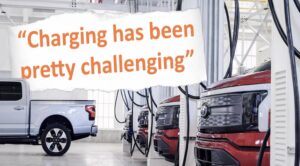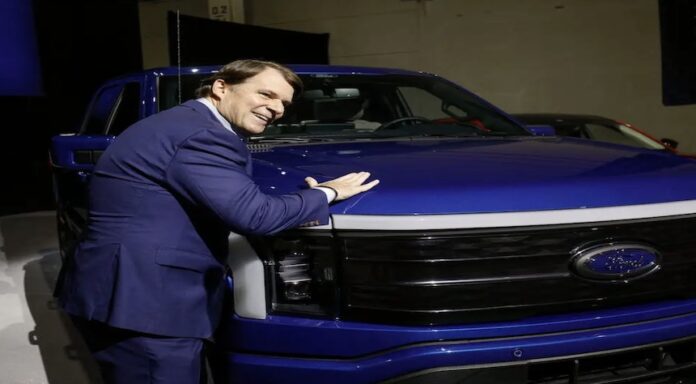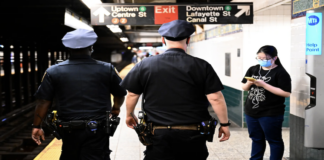Jim Farley is the CEO of Ford Motor Company. He recently took a road trip in one of Ford Motor Company’s F150 Lightning trucks. There were some problems, but that was not surprising.
“Charging has been pretty challenging,” Farley said on X, the social-media website formerly known as Twitter. “It was a really good reality check of the challenges of what our customers go through and the importance of fast charging and what we’re going to have to do to improve the charging experience.”
No surprise charging can be a challenge, but still learning a lot seeing firsthand the issues our customers face. This is why we’re working w/ @Tesla to provide @Ford drivers access to +12,000 superchargers & our EV certified dealers are installing fast chargers at their… pic.twitter.com/fES15o9orT
— Jim Farley (@jimfarley98) August 13, 2023
Mr. Farley tried to minimize the trip’s setbacks but it was not without them.
Ford F-150 Lightning, Ford’s newest electric vehicle, made the trip. He shared his experiences on both X and LinkedIn.
Farley said that he visited a charging station on Interstate 5 in Coalinga California, where 40 Tesla Superchargers are readily available.
Ford CEO, Mark Fields, used a charging device with a low speed that, according to him, provided a 40% charge in 40 minutes.
Farley expressed his delight at the speed and ease of charging at a charger with a capacity of 350 kW in Baker, California during a second visit.
The charging process was quick and easy. Farley said that fast charging stations, as well as nice stations, can make a big difference in the overall experience for EVs.

There are likely to be more charging stations between Palo Alto, California, and Las Vegas, Nevada (about 550 miles) than in other large pickup markets such as Wyoming and North Dakota. Charging a 40 percent battery takes 40 minutes. This isn’t impressive considering that gasoline vehicles charge their entire range in less than five minutes.
To make this advertising stunt a reality, it will take a lot of work. According to the California Energy Commission (CEC), 1.2 million chargers will be required by 2030 to meet the goals for electric vehicles in California. CEC estimates another 157,000 stations will also be required by 2030 to support 180,000 medium- and heavy-duty electric buses and trucks. CEC does not provide estimates on how much the charging stations would cost.

California is also looking at plans to use electric cars to boost generation and electrical grid capacities. Golden State politicians have asked PG&E to delay the planned closing of the Diablo Canyon nuclear power plant. California has closed its last nuclear power plant.
You can see that despite the grid problems, the 550-mile journey in an area with a growing number of EVs still has some issues. CEO Farley made the 550-mile trip in clear, warm weather without towing anything.
The problem of air pollution in California was caused by older cars that burned leaded gasoline. This problem has been solved with gasoline-powered vehicles. Modern internal combustion engines have better fuels, computerized injection of fuel, and turbocharging without lag. The EPA has endorsed the idea.

The environmental extremists won’t admit to success because activism brings in too much fame and money. So now we have a failing power grid in a state that intends to mandate electric vehicles, while government-subsidized battery companies are failing.
Ford’s CEO Jim Farley is a joke. But it doesn’t alter the fact that California is having a real problem with its EV mandate, and the current state of EV technology in general. The majority of Americans prefer ICE cars, and they are not likely to be changing their minds anytime soon.










